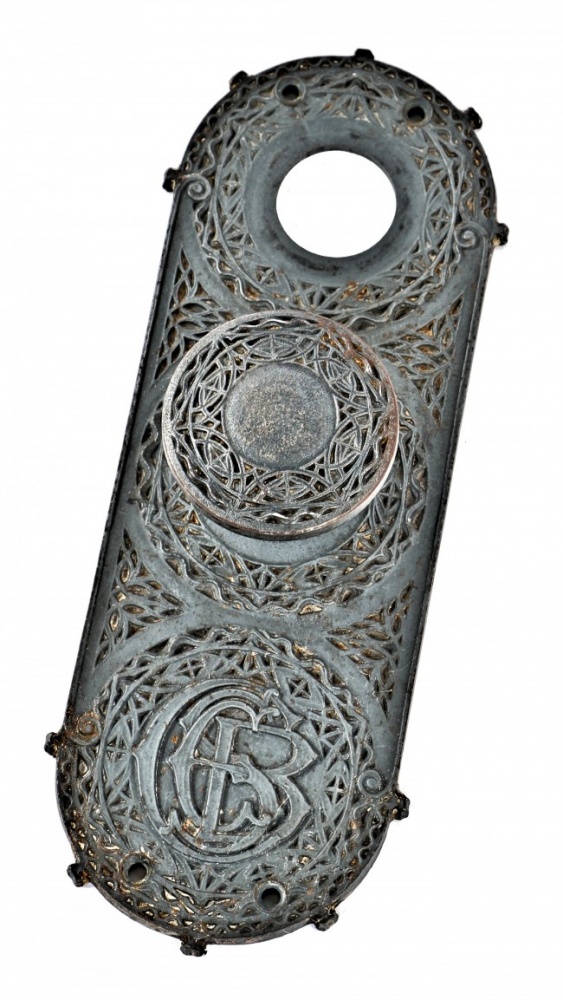
original and completely intact c. 1890’s louis h. sullivan-designed chicago stock exchange building monogrammed ornamental cast iron backplate and doorknob
51-23875-16
Category
Louis SullivanAbout This Item
remarkable all original and highly sought after late 19th century antique american ornamental cast iron chicago stock exchange building interior office door monogrammed escutcheon and matching doorknob designed by chicago architect louis h. sullivan. the doorknob set was fabricated by the yale & towne mfg. co., stamford, ct. the original “rust-proof” bluish-black bower-barff finish remains largely intact. the backplate and doorknob exhibit exceptional detail throughout. the larger monogrammed backplates were outfitted on the office doors located in the corridors of each floor. built on the site of the first brick building in chicago (1837), the 13 story steel frame chicago stock exchange building was designed by the architectural firm of adler and sullivan with falkenau & company as general contractors. the building was completed in 1894 at a total cost of $1,131,555.16. the stock exchange contained 13 stories with the single basement containing both pile and caisson foundations (the latter were used on the west party wall). the building contained 480 offices. the stock exchange was the second largest commission awarded to sullivan and adler (the largest being the auditorium hotel and theater). the building’s exterior was outfitted with ornamental buff-colored terra cotta designed by sullivan and fabricated by the northwestern terra cotta company. its structural system consisted of fireproofed steel framing. the first floor was treated on the exterior as basement, with the second and third floors as an arcade, bay windows extended from the fourth through the twelfth floor and the thirteenth contained a colonnaded ribbon of windows topped by a projecting cornice with a richly worked surface. the interior contained shops on the ground level with offices on the upper floors of the main block and wings. the elevators were located at the center of the building. the trading room occupied one-half of the second and third floors. two sets of stairways were found on floors 4-13. the highly stylized staircase was comprised of copper-plated ornamental iron, oak railings and white marble treads. when the stock exchange moved in 1908, the trading room was converted into office space and later bank. during the course of demolition in 1972, photographer and activist richard nickel was working to salvage ornament the building when the unstable structure collapsed and he was tragically killed. as a tribute to nickel and sullivan, sections of the trading room stencils, molded pilaster capitals, and art glass were preserved. the art institute created a complete reconstruction of this significant room in a new wing of the museum in 1977. at the same time, the monumental entry arch of the stock exchange was erected on the museum grounds near the corner of monroe street and columbus drive. priced for the set.





